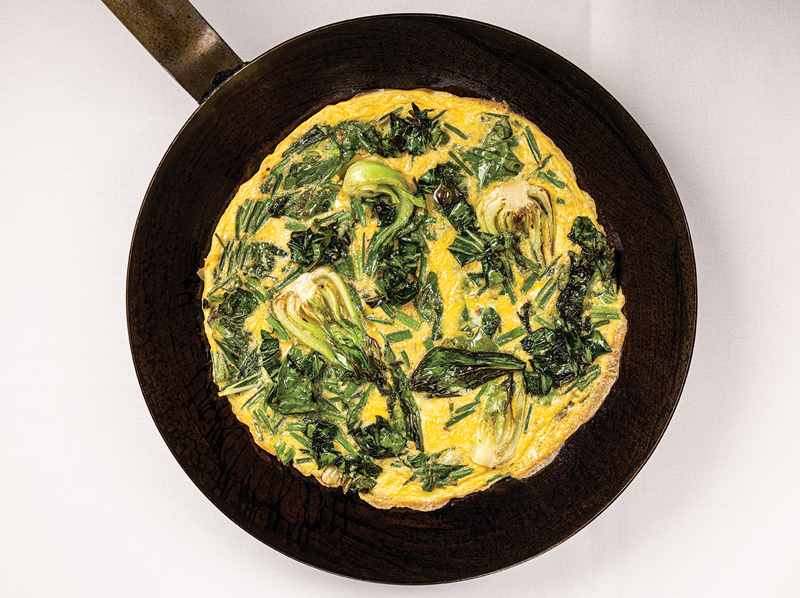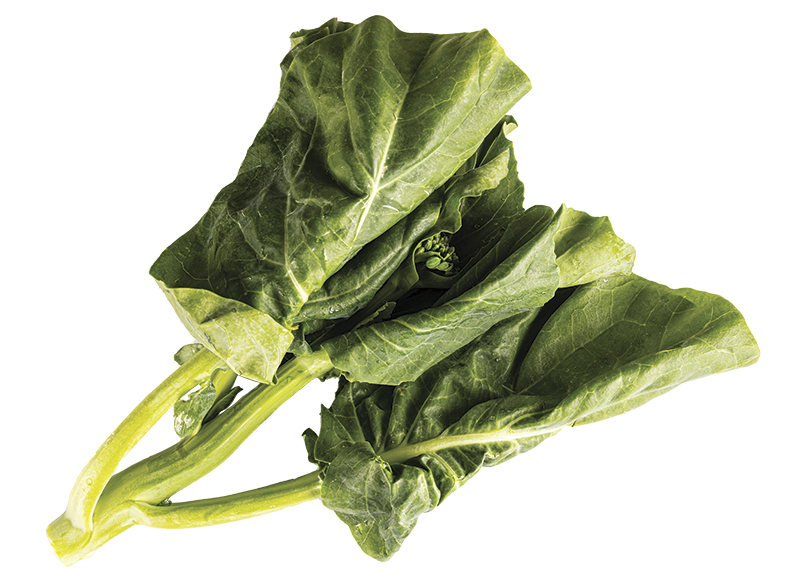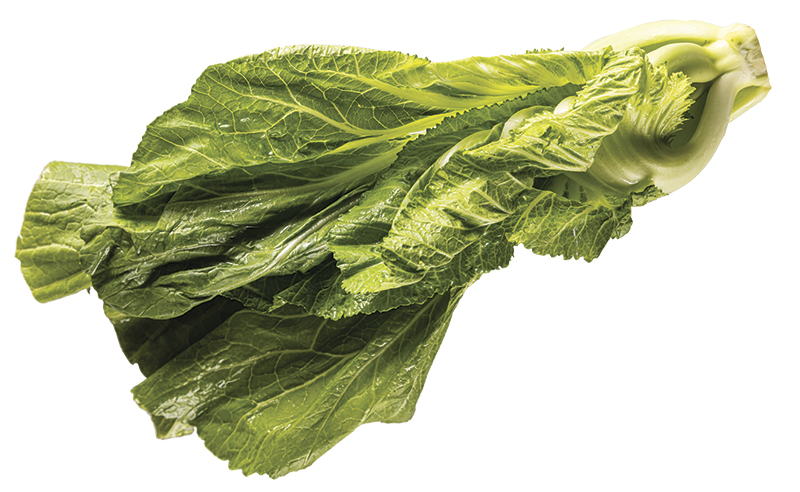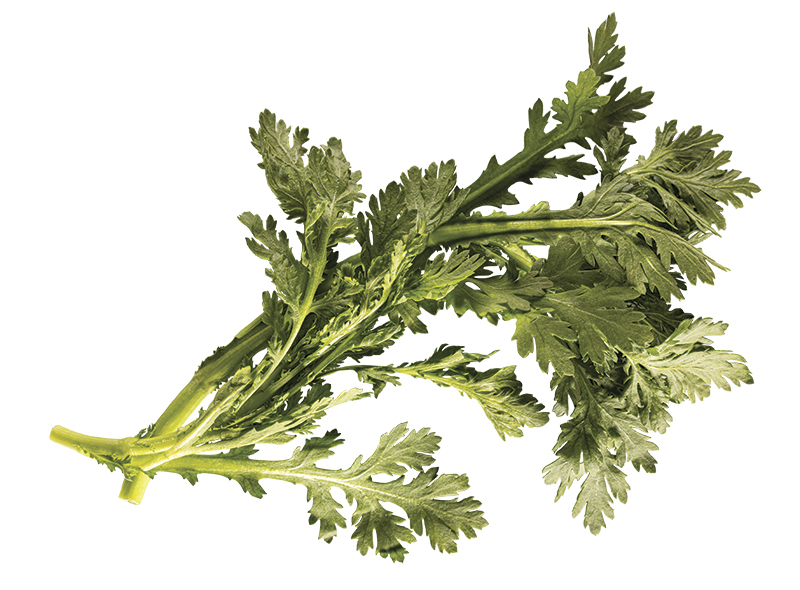
In the springtime, I can’t seem to get enough fresh greens. Once my garden is up to speed, it can be more than accommodating—in fact, my overzealous planting can cause anxiety and guilt about waste. Therefore, I tend to have some form of greens with every meal, and one of the most versatile dishes I prepare with greens, suitable for any time of day, is a simple frittata.
Over the past two decades, I feel like the frittata has become omnipresent—perhaps even abused—on menus, especially for brunch. But they are popular for many reasons. A frittata can be quick to cook, delicate and thin like a crepe, ready within a few minutes. For a crowd, they can be made several inches thick, studded with meats, vegetables, cheeses, and even cubes of bread, pasta, or potatoes. Taking around 30 minutes to cook, this version allows time for you to enjoy your first cup of coffee or mimosa. A frittata can also be rolled like an omelet, spread with a luxurious herbed mayonnaise, or even loosely scrambled with any number of enrichments and piled onto rustic slabs of grilled bread. And don’t forget that a frittata is an excellent vehicle for using up remnants of meals past or stretching the odd bits lying around the kitchen into a substantial repast. Regardless of your favorite variety, I hope you’ll keep the frittata in mind—and eat your greens.
Frittata with Greens
I seldom make a frittata the same way twice, but one that I do repeat is also the easiest and one of the most delicious—one with quickly wilted greens and maybe an herb, usually something from the onion family. It is tasty, warm straight from the skillet, at room temperature sitting on a buffet, or even tucked between two slices of good bread and enjoyed on a hike or picnic.
Begin by preheating the oven to 350° F and assembling your ingredients. For two people, crack five or six eggs into a bowl, add a big pinch of salt, and whisk the eggs briefly with a fork. For the greens, a very large handful of any of the quick cooking types are perfect here, but leftover braised greens or sauteed spinach would also be appropriate (and delicious). Two of my current favorites are bok choy and gai lan, Asian greens with a hint of sweetness and the bite of mild mustards (see In the Pantry). Wash, dry and coarsely chop the greens, separating any thicker stems and cutting them into quarter-inch pieces. Small heads of bok choy can simply be cut in half to reveal their beautiful curves and layers—they cook in almost no time. You also need a small handful of chopped chives, green onions, or even garlic chives. Preheat a skillet—cast-iron, non-stick, or well-seasoned carbon steel, about ten inches in diameter—or as close as you can get. When the skillet is hot, add a few tablespoons of vegetable oil, and then immediately add the thicker stems. Over high heat, sauté them for a few minutes, then add the leaves, a big pinch of salt, the herbs, and another of crushed red pepper flakes if you like it spicy. Stir and toss the greens, covering them for about 60 seconds to encourage them to wilt. Uncover the greens and toss for another 2 or 3 minutes. If you are using little bok choy heads cut in half, put them cut-side down in the hot skillet when you first add the thick stem pieces. As the greens approach the finish line (wilting and becoming tender), peer at the bottom of the skillet. If the skillet looks dry on bottom, add another splash of oil, then pour the egg mixture all over and around the greens. Tilt the skillet to spread the egg mixture evenly around the pan, poking and prodding the greens as needed to get them equitably distributed across the surface. Allow the bottom of the frittata to set (this will take about a minute), then transfer the pan to the oven to finish cooking for a few minutes more—the time will vary based on the size of the skillet, the number of eggs and greens, etc. I like the frittata to be just set—a few wet-looking bits might still be visible—when I remove it from the oven. It will continue to cook and set as it begins to cool. Although some people really love the crispy bits around the edge of the pan, I am not really a fan of browned eggs (a prejudice I acquired at my first cooking job at Charlene Welling’s Classic Cup in Westport almost 28 years ago). If you like your eggs to have color, by all means cook them longer. The frittata is ready to serve, directly from skillet to plate, or it can sit around for a while waiting for guests to assemble or drinks to be poured. For breakfast, I would serve it with lavishly buttered toast, for lunch or dinner perhaps alongside a vegetable salad and steamed aromatic rice.
In the Pantry: Asian Greens
Due to hundreds of years of cultivation on multiple continents, there are countless varieties of Asian greens available today. The names can be an endless source of confusion and vary by country, language, purveyor, tradition, or seed catalog. The best source for these greens is an Asian grocery or farmer’s stand, where you will always find something interesting. Asian grocers also have by far the best prices and—due to their pervasiveness in Asian cuisines—freshness and variety.
Chinese Mustard
Also known as gai choy, this is one of the most common mustards found in Asian stores. It comes in several varieties and sizes, each with different applications. Some are used more for the leaf (when very young), some more for the thick, juicy stem (sometimes with much of the leaf trimmed away). Frequently salted and pickled, maybe fermented, the mature forms are mostly used for cooking or braising. The flavor is true to the mustard family, and due to its mustard quality, pairs well with rich meats, garlic and ginger, apples, and vinegars.
Bok Choy & Co.
There are so many varieties. Sometimes called Chinese cabbage (but not to be confused with Napa cabbage!), bok choy, or pak choi, this family of greens may look very different at different stages of maturity. Most have white stems with a bulbous base. Green-stemmed or Shanghai bok choy is perhaps the sweetest, with a pretty, spoon-ish hourglass shape. Choy sum or long bok choy is exactly like it sounds—long, with crunchy delicious stems that behave similarly to Swiss chard. For stir fries, start with stems then add leaves closer to the finish line. 
Gai Lan
Also kai lan or Chinese broccoli, it is similar to Italian broccoli raab, but less bitter and fibrous. Though most likely of Mediterranean origin (like broccoli), the green was introduced to China and bred for different characteristics in ancient times. Chinese immigrants brought it to the United States where its popularity continues to spread. Gai lan has a deep, almost blue color, bittersweet flavor, and tremendous juicy crunch. It responds well to blanching or a quick stir fry, its flavor accentuated with garlic, fresh ginger, and a generous dash of oyster sauce or drizzle of honey.
Chrysanthemum Greens
Although of Mediterranean origin, the edible chrysanthemum was primarily adopted as a vegetable in China (where it is known as tong ho), Japan (shungiku), and Southeast Asia (sukat and variations). Here it is commonly known by gardeners as garland chrysanthemum and is more likely to be found in the flower garden. The sharply serrated, almost fuzzy leaves should always be washed thoroughly as their leaves are a perfect trap for sand and grit. When tiny, the raw leaves can be added to salad mix. Older leaves can be intensely fragrant but are tamed by cooking, even added to a soup in the final moments before serving. For big flavors, dress with soy sauce, sesame oil, vinegar, chili, and sugar.




